Features
Painted Worlds
By JARRETT A. LOBELL
Monday, September 25, 2017
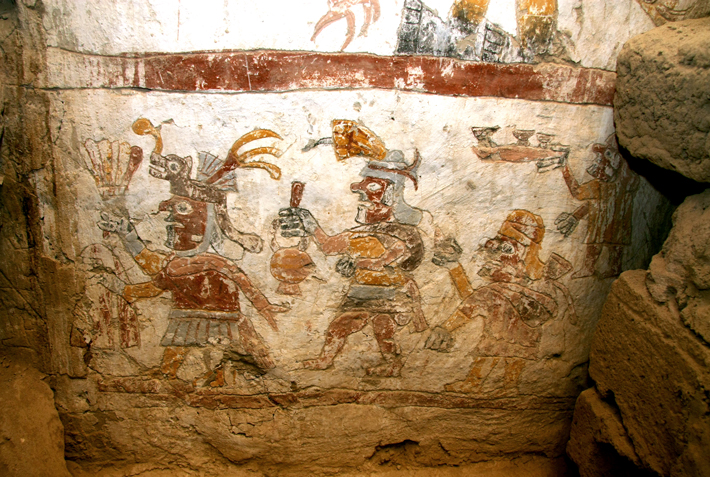
The cover of the Autumn 1951 issue of ARCHAEOLOGY features a dramatic scene of close combat between two men, teeth bared, faces bright red with exertion, garments flying, pulling each other’s hair so violently that each grips the ripped-out forelock of his foe. Created by the artist Pedro Azabache, this cover is a replica of a wall painting at the site of Pañamarca on the northwest coast of Peru, done very shortly after the work’s rediscovery. Mural A depicts a contest between Ai-Apaec, the mythological hero worshipped by the Moche culture, which flourished in this region between about A.D. 200 and 900, and his twin or double. Although Pañamarca’s impressive ruins on a granite outcropping in the lower Nepeña River Valley were well known in the first half of the twentieth century, and had been described by travelers in the late nineteenth century, only a few articles about the site had been published and very little had been said about its wall paintings. Thus, when American archaeologist Richard Schaedel arrived there in 1950, he believed that any paintings he might find would be fragmentary at best. Once there, however, he soon found that Pañamarca’s adobe structures had been completely covered in polychrome murals. In a single week—originally planned for five days, the trip was extended when more murals and a group of burials were discovered—Schaedel and his five-person team not only recorded the combat scene, but also discovered new murals of what he identified as a large cat-demon and an anthropomorphic bird. On the walls of a large plaza, they documented a 30-foot-long composition showing a procession of warriors and priests wearing a costume with knife-shaped backflaps known to have been part of Moche sacrificial rituals.
Though in less than pristine condition after more than 1,000 years, the abundance and unexpected state of preservation of Pañamarca’s murals surprised and delighted Schaedel. But it also concerned him. In his article about the site for Archaeology, he writes, “We hope that this description [of the paintings] will serve as a timely note and warning to lovers of art and archaeology in Peru and elsewhere that this rich source of vivid mural decoration, which today only awaits the patience of the archaeologist to reveal, may tomorrow be irrevocably destroyed. If these still unrevealed documents of the human spirit are not to be forever lost to us, we must constantly keep in mind two ideals: as archaeologists, to devote our attention first and foremost to the adequate documentation of fragile paintings; and to create among the public in general an awareness of their aesthetic as well as their documentary value, so that the present apathy towards their preservation may be replaced by a sense of obligation to their protection.”
Over the more than 65 years since Schaedel’s work at Pañamarca, it was widely assumed that his admonitions had been ignored or forgotten, and that the surviving murals had fallen into ruin. Very little fieldwork was conducted after Schaedel’s excavations and work by Duccio Bonavia later in the 1950s, and only a few new paintings were discovered. When archaeologist and art historian Lisa Trever of the University of California, Berkeley, chose to work in Pañamarca in 2010 along with her Peruvian colleagues Jorge Gamboa, Ricardo Toribio, and Ricardo Morales, she wasn’t very hopeful. “I was pessimistic when we began, figuring that most of the murals that had been discovered before had been destroyed, so we set out to map where the paintings had been and to contextualize what remained,” she says. “But when we began to dig, we were shocked that so much had survived from the earlier excavations.” What was even more surprising was that so much more remained in situ, intact, and unexcavated. “We were soon looking at things that no one had seen since A.D. 780, when parts of the site were deliberately buried,” says Trever. “We went in with a sense that Pañamarca was a site of lost monuments and lost masterpieces of the ancient Peruvian past, and were amazed to find out that not everything was lost at all.”
|
Slideshow:
|
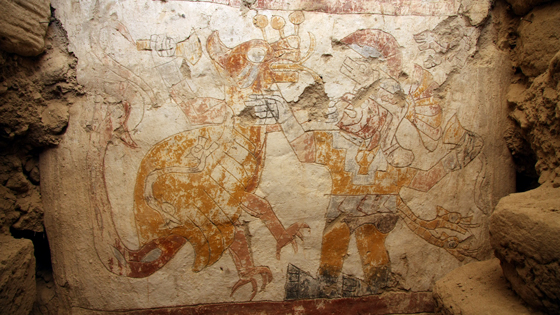
Exploring Moche Murals
|
The Heights We Go To
By KAREN COATES
Monday, August 14, 2017
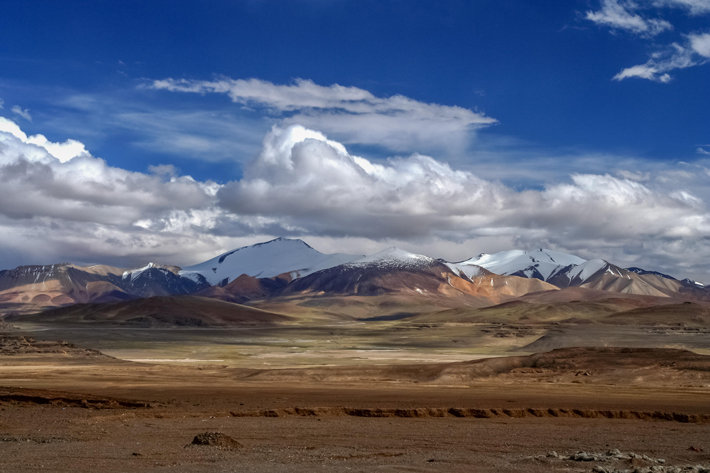
High-altitude landscapes are some of the most inhospitable places on Earth. They are cold, dry, and oxygen-poor. They were the last places humans settled—yet people did it and they survived. But how? For archaeologist Mark Aldenderfer of the University of California, Merced, a fundamental trait of humanity is our ability to adapt, especially to extreme environments. From the Himalayas to the Andes to the Ethiopian Plateau, people have evolved in ways that allow them to live at high altitude. “They’ve all converged on a solution,” he says. “They’ve all found a way to live at high elevation.”
Aldenderfer has assembled a team of experts in disciplines ranging from bioarchaeology to ethnography, paleoclimatology, geochronology, genetics, evolutionary medicine, and even mountaineering to augment archaeological research in order to understand what has clearly come about by way of evolution. He says, “You need the story of the people who lived at that time to tell you how these things actually worked. It’s about the whole process by which people adapt culturally, biologically, and genetically.”
Aldenderfer began his research in the 1970s as a graduate student on the Ethiopian Plateau, one of the highest in the world, where he studied the remains of the Iron Age trading empire of Aksum. Political turmoil cut his research short, and it became impossible to go back. A short while later, he took a research position high in the Peruvian Andes, studying early hunter-gatherers. Aldenderfer realized he had stumbled into a niche of untapped archaeological research on early human adaptation to high-elevation environments.
Working at such heights can be excruciating. A throbbing head, aching lungs, sleeplessness, fatigue, wheezing, coughing, confusion, and rapid pulse are all associated with hypoxia, a condition where tissues can’t get enough oxygen. It occurs when people accustomed to living at lower altitudes climb above 8,000 feet, and it can be dangerous and lead to pulmonary edema, stroke, and even death. Women who aren’t adapted to high elevations can have a much harder time bearing children and risk having low-birth-weight babies. Nevertheless, people have successfully settled at these altitudes for millennia—perhaps 7,000 years or more. The question is, how does such an adaptation come about? Jacqueline Eng, Western Michigan University biological anthropologist and osteology expert on Aldenderfer’s team, explains, “When we’re challenged by the environment, if some individuals have genetic traits that enable them to survive and reproduce more successfully than others who lack that trait, then those with the beneficial traits live and pass those traits along until it becomes more common in populations owing to the advantage it confers.”
It can be observed that, compared with people who live at sea level, Tibetans breathe more frequently and take in more oxygen, and they have expanded blood vessels that enhance the delivery of oxygen throughout the body. Andeans have higher levels of hemoglobin, the protein responsible for transporting oxygen in the bloodstream, so their blood cells carry more oxygen than those of lowlanders. Studies of highland Ethiopians, too, indicate genetic adaptations to low-oxygen environments. Something must confer these adaptations. Eng says there are several telltale alleles found in high-altitude populations where hypoxia is a major challenge. An allele is one of multiple versions of the same gene that determine various physiological traits—blood type in humans, for example, or the distinct color of a rose. Alleles can be thought of as recipes for the same gene—think of the difference between spaghetti with meatballs and spaghetti with ground beef. In evolutionary terms, random mutations create new recipes for alleles that may eventually come to exist throughout a population.
|
Video:
|
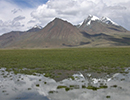
High Altitude Genetics
|
Advertisement
Also in this Issue:
Advertisement
IN THIS ISSUE
From the Trenches
White Horse of the Sun
Off the Grid
Doll Story
Freeze Frame
Last Stand of the Blue Brigade
Where There’s Coal…
Reading Invisible Messages
Disposable Gods
A Princely Update
Fast Food
Andean Copper Age
Capital Gains
Not by Bread Alone
Advertisement

Recent Issues
-
 May/June 2024
May/June 2024
-
 March/April 2024
March/April 2024
-
 January/February 2024
January/February 2024
-
 November/December 2023
November/December 2023
-
 September/October 2023
September/October 2023
-
 July/August 2023
July/August 2023
-
 May/June 2023
May/June 2023
-
 March/April 2023
March/April 2023
-
 January/February 2023
January/February 2023
-
 November/December 2022
November/December 2022
-
 September/October 2022
September/October 2022
-
 July/August 2022
July/August 2022
-
 May/June 2022
May/June 2022
-
 March/April 2022
March/April 2022
-
 January/February 2022
January/February 2022
-
 November/December 2021
November/December 2021
-
 September/October 2021
September/October 2021
-
 July/August 2021
July/August 2021
-
 May/June 2021
May/June 2021
-
 March/April 2021
March/April 2021
-
 January/February 2021
January/February 2021
-
 November/December 2020
November/December 2020
-
 September/October 2020
September/October 2020
-
 July/August 2020
July/August 2020
-
 May/June 2020
May/June 2020
-
 March/April 2020
March/April 2020
-
 January/February 2020
January/February 2020
-
 November/December 2019
November/December 2019
-
 September/October 2019
September/October 2019
-
 July/August 2019
July/August 2019
-
 May/June 2019
May/June 2019
-
 March/April 2019
March/April 2019
-
 January/February 2019
January/February 2019
-
 November/December 2018
November/December 2018
-
 September/October 2018
September/October 2018
-
 July/August 2018
July/August 2018
-
 May/June 2018
May/June 2018
-
 March/April 2018
March/April 2018
-
 January/February 2018
January/February 2018
-
 November/December 2017
November/December 2017
-
 September/October 2017
September/October 2017
-
 July/August 2017
July/August 2017
-
 May/June 2017
May/June 2017
-
 March/April 2017
March/April 2017
-
 January/February 2017
January/February 2017
-
 November/December 2016
November/December 2016
-
 September/October 2016
September/October 2016
-
 July/August 2016
July/August 2016
-
 May/June 2016
May/June 2016
-
 March/April 2016
March/April 2016
-
 January/February 2016
January/February 2016
-
 November/December 2015
November/December 2015
-
 September/October 2015
September/October 2015
-
 July/August 2015
July/August 2015
-
 May/June 2015
May/June 2015
-
 March/April 2015
March/April 2015
-
 January/February 2015
January/February 2015
-
 November/December 2014
November/December 2014
-
 September/October 2014
September/October 2014
-
 July/August 2014
July/August 2014
-
 May/June 2014
May/June 2014
-
 March/April 2014
March/April 2014
-
 January/February 2014
January/February 2014
-
 November/December 2013
November/December 2013
-
 September/October 2013
September/October 2013
-
 July/August 2013
July/August 2013
-
 May/June 2013
May/June 2013
-
 March/April 2013
March/April 2013
-
 January/February 2013
January/February 2013
-
 November/December 2012
November/December 2012
-
 September/October 2012
September/October 2012
-
 July/August 2012
July/August 2012
-
 May/June 2012
May/June 2012
-
 March/April 2012
March/April 2012
-
 January/February 2012
January/February 2012
-
 November/December 2011
November/December 2011
-
 September/October 2011
September/October 2011
-
 July/August 2011
July/August 2011
-
 May/June 2011
May/June 2011
-
 March/April 2011
March/April 2011
-
 January/February 2011
January/February 2011
Advertisement





 The name “Moche” or “Mochica” comes not from any ancient source, but was given to the culture in the 1930s because the region’s ancient center was located near the modern town of Moche. Rather than being a single political entity or state, the Moche culture was a loose system of chiefdoms situated in multiple irrigated valleys, linked by shared practices and common beliefs. Their territory encompassed more than 400 miles along the coast of northern Peru. While not exactly a political capital, the cultural and artistic homeland of the Moche world was located in the Chicama and Moche Valleys, near the city of Trujillo. At some point, Pañamarca, which was about 100 miles to the south, grew in religious and cultural importance.
The name “Moche” or “Mochica” comes not from any ancient source, but was given to the culture in the 1930s because the region’s ancient center was located near the modern town of Moche. Rather than being a single political entity or state, the Moche culture was a loose system of chiefdoms situated in multiple irrigated valleys, linked by shared practices and common beliefs. Their territory encompassed more than 400 miles along the coast of northern Peru. While not exactly a political capital, the cultural and artistic homeland of the Moche world was located in the Chicama and Moche Valleys, near the city of Trujillo. At some point, Pañamarca, which was about 100 miles to the south, grew in religious and cultural importance.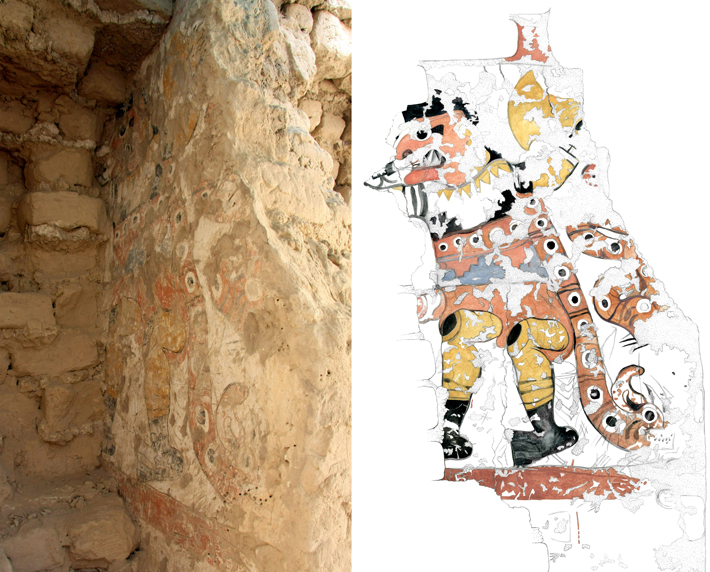
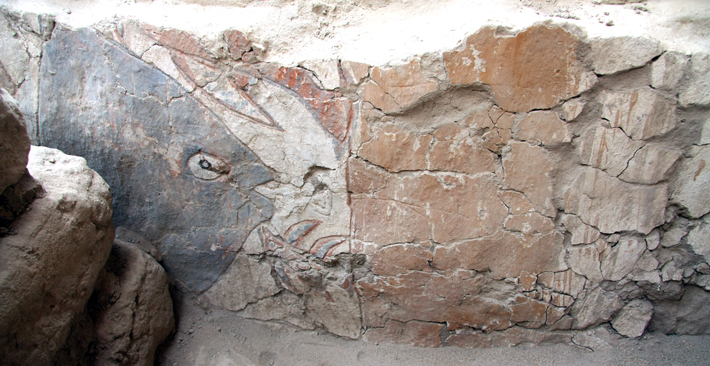
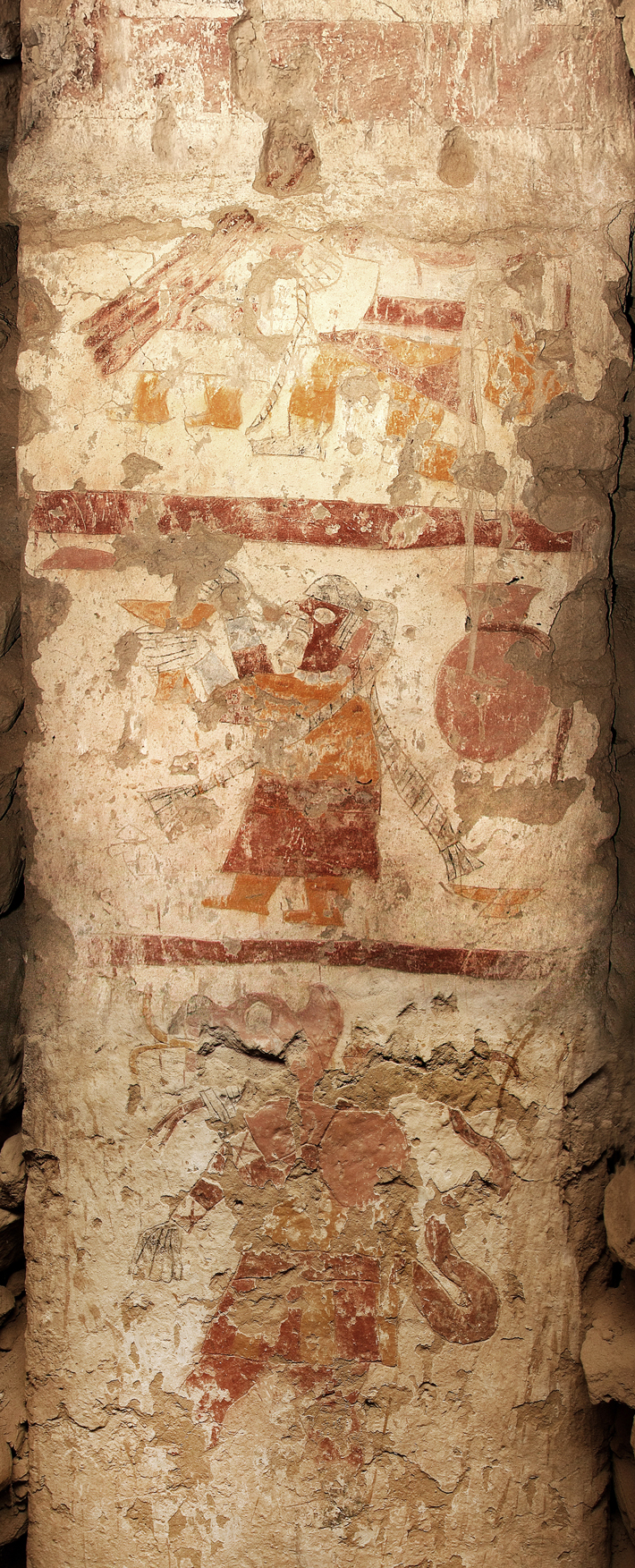 Though much about Moche art and architecture is well understood, key questions about significant changes in painting styles over time—and how these might be related to shifts in Moche fortunes—are at the forefront of current work. Roughly four centuries after the culture first appeared, some sort of disruption rippled throughout the entire Moche world. The cause, according to archaeologist Michele Koons of the Denver Museum of Nature & Science, is the million-dollar question. One possible explanation is an El Niño event, but Koons says that researchers have not yet found definitive evidence of this. She says, “I think that it was probably a mixture of different things—possibly climate change or drought, an earthquake, or some other natural disaster, as well as pressure from highland powers such as the Wari.”
Though much about Moche art and architecture is well understood, key questions about significant changes in painting styles over time—and how these might be related to shifts in Moche fortunes—are at the forefront of current work. Roughly four centuries after the culture first appeared, some sort of disruption rippled throughout the entire Moche world. The cause, according to archaeologist Michele Koons of the Denver Museum of Nature & Science, is the million-dollar question. One possible explanation is an El Niño event, but Koons says that researchers have not yet found definitive evidence of this. She says, “I think that it was probably a mixture of different things—possibly climate change or drought, an earthquake, or some other natural disaster, as well as pressure from highland powers such as the Wari.”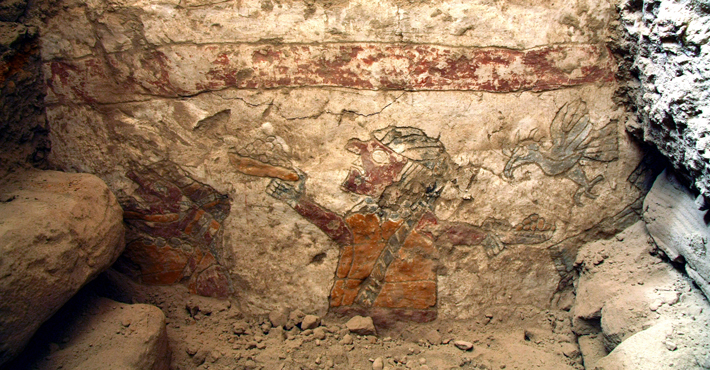
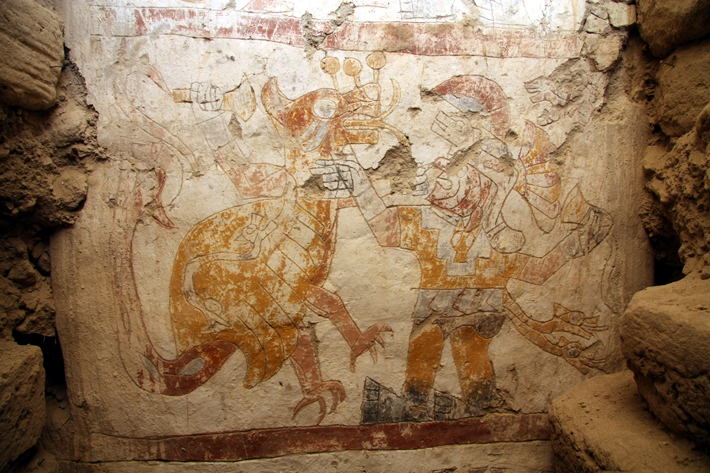
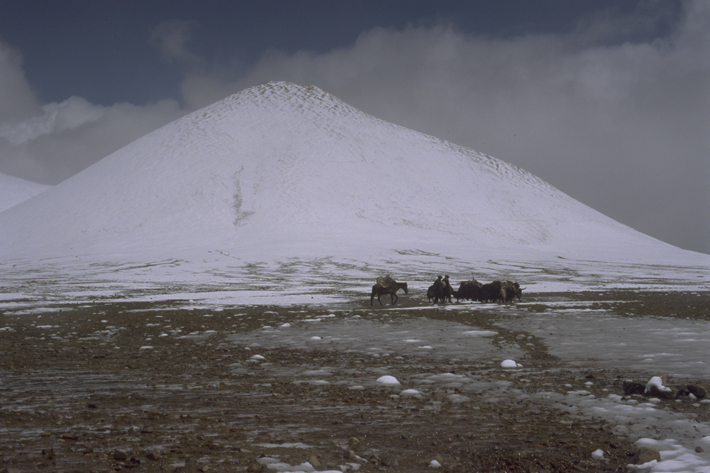
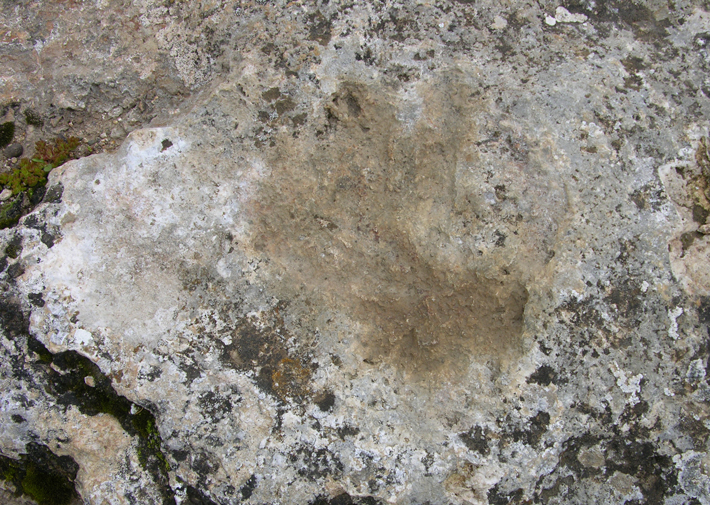 Aldenderfer and several of his colleagues created a stir in early 2017 when they announced that they had evidence of preagricultural hunter-gatherers living in a permanent settlement system on the central Tibetan Plateau at least 7,400 years ago—thousands of years earlier than researchers had previously thought. That research centers on a site called Chusang, about 215 miles from Lhasa, at an elevation of 14,000 feet. There, 19 human hand- and footprints are embedded in a unique formation of travertine limestone created in the remains of ancient hot springs. No artifacts were found nearby, just the markings of up to six individuals who were at that site millennia ago.
Aldenderfer and several of his colleagues created a stir in early 2017 when they announced that they had evidence of preagricultural hunter-gatherers living in a permanent settlement system on the central Tibetan Plateau at least 7,400 years ago—thousands of years earlier than researchers had previously thought. That research centers on a site called Chusang, about 215 miles from Lhasa, at an elevation of 14,000 feet. There, 19 human hand- and footprints are embedded in a unique formation of travertine limestone created in the remains of ancient hot springs. No artifacts were found nearby, just the markings of up to six individuals who were at that site millennia ago.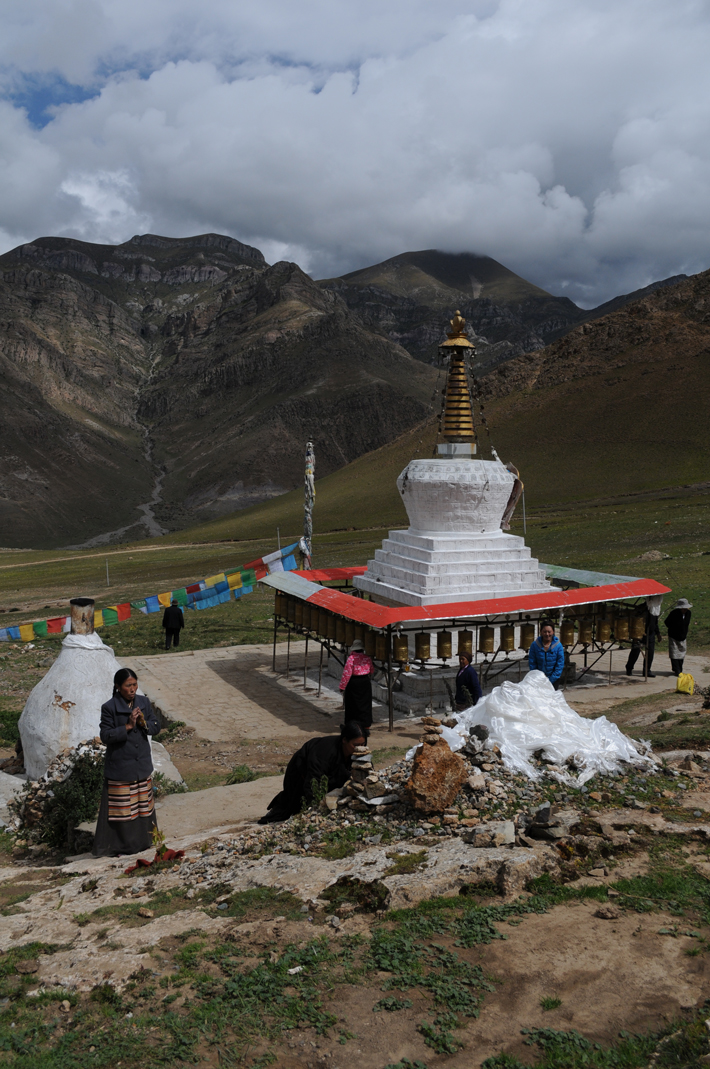 Without artifacts, the researchers had to rely on research methods such as geochronology and a variety of other dating techniques. Aldenderfer’s team hypothesizes that Chusang was one stop in a permanent preagricultural occupation, and that the prints were made by early hunter-gatherers who settled on the plateau year-round. The finding is pivotal for several reasons. First, it clarifies Chusang’s age, which had long been debated. Some previous research had pinned the site at 20,000 years old or more, which perplexed many researchers, as that would have meant humans were present there during the height of the Last Glacial Maximum. The new dates—7,400 to 13,000 years ago—“are more consistent with what we know about the broader region,” says the University of Pittsburgh’s Loukas Barton.
Without artifacts, the researchers had to rely on research methods such as geochronology and a variety of other dating techniques. Aldenderfer’s team hypothesizes that Chusang was one stop in a permanent preagricultural occupation, and that the prints were made by early hunter-gatherers who settled on the plateau year-round. The finding is pivotal for several reasons. First, it clarifies Chusang’s age, which had long been debated. Some previous research had pinned the site at 20,000 years old or more, which perplexed many researchers, as that would have meant humans were present there during the height of the Last Glacial Maximum. The new dates—7,400 to 13,000 years ago—“are more consistent with what we know about the broader region,” says the University of Pittsburgh’s Loukas Barton.
